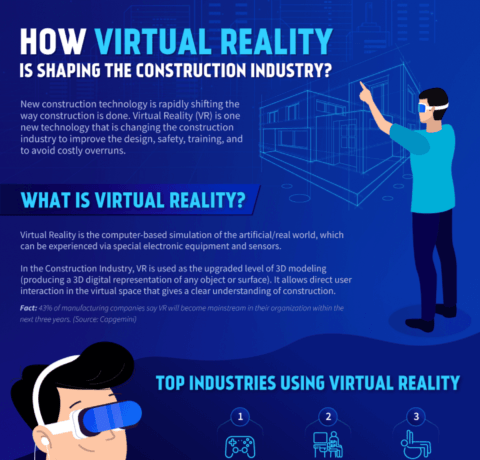In recent years, the world of training and education has been revolutionized by immersive training solutions using virtual reality simulations. Imagine being able to practice complex surgical procedures without the need for a human patient or to experience high-intensity emergency situations without any real danger. The advancements made in virtual reality technology have made such scenarios possible, offering an unprecedented level of realism and interactivity.
Immersive training solutions are backed by a rich history, with virtual reality simulations dating back to the 1960s. However, it is in the past decade that significant strides have been made in terms of accessibility and affordability. Today, these simulations can be easily accessed through virtual reality headsets, providing individuals with the opportunity to train in a safe and controlled environment. According to a recent study, virtual reality simulations have been shown to improve learning outcomes by up to 70% compared to traditional training methods. This makes them a highly effective tool in various industries, from healthcare and aviation to manufacturing and defense.


Advancements in Immersive Training Solutions
Immersive training solutions have revolutionized the way we learn and acquire new skills. With the advent of virtual reality (VR) simulations, training programs have become more interactive, engaging, and realistic. By creating a virtual environment that mirrors real-life scenarios, individuals can gain practical experience and develop their expertise in various fields. The advancements in this technology have opened up new possibilities for industries such as healthcare, aviation, manufacturing, and more.
One area where virtual reality simulations have made a significant impact is in healthcare training. Medical professionals can now practice complex surgeries or emergency procedures in a virtual environment, allowing them to hone their skills and improve patient outcomes. VR simulations can also simulate patient interactions, offering healthcare providers the opportunity to develop their bedside manners and communication skills. The level of immersion provided by these simulations enhances the learning process, making it more engaging and memorable.
Moreover, virtual reality simulations have also transformed aviation training. Pilots can now undergo realistic flight simulations without the need for expensive aircraft or risking lives. These simulations replicate various environments and weather conditions, allowing pilots to practice different maneuvers and emergency situations. This immersive training experience helps pilots develop their decision-making abilities and improves their overall flight proficiency. Virtual reality has become an invaluable tool in aviation training, significantly reducing costs while maintaining a high level of training effectiveness.
Benefits of Virtual Reality Simulations in Training
The use of virtual reality simulations in training offers numerous benefits compared to traditional methods. Let’s explore some of the key advantages:
Realistic Scenarios and Environments
Virtual reality simulations provide trainees with a realistic and immersive experience. Whether it’s performing a surgery, flying a plane, or handling hazardous materials, trainees can interact with virtual scenarios that closely resemble real-life situations. This level of realism helps individuals develop the skills and confidence needed to handle these scenarios in their actual work environments. By allowing trainees to make mistakes and learn from them within a safe virtual space, VR simulations enhance the overall training process.
Additionally, virtual reality environments can be tailored to specific training needs. For example, in medical training, simulations can replicate different patient conditions and complications, allowing trainees to practice a wide range of scenarios. This versatility makes VR simulations adaptable to various industries and training requirements.
Moreover, VR simulations can recreate challenging or rare situations that may not occur frequently in real life. This enables trainees to experience and learn from these scenarios, ensuring they have the necessary skills and knowledge to handle them should they arise.
Overall, the realistic scenarios and environments provided by virtual reality simulations enhance the effectiveness and efficiency of training programs.
Improved Engagement and Retention
Traditional training methods often involve passive learning, such as reading textbooks or watching demonstrations. This can lead to reduced engagement, limited retention of information, and decreased motivation among trainees. However, virtual reality simulations offer an interactive and engaging learning experience.
Through VR simulations, trainees become active participants in the learning process. They can explore, interact, and solve problems within the virtual environment, which stimulates critical thinking and decision-making skills. This hands-on approach enhances information retention and improves the transfer of knowledge from virtual training to real-life applications.
In addition, virtual reality simulations provide immediate feedback to trainees. They can instantly see the consequences of their actions and make adjustments accordingly. This feedback loop promotes a continuous learning cycle, allowing trainees to refine their skills and improve their performance.
By increasing engagement and retention, virtual reality simulations offer a more effective and enjoyable learning experience.
Cost and Safety Benefits
Traditional training methods often come with significant costs, such as the need for physical equipment, facilities, and instructors. However, virtual reality simulations reduce these expenses significantly.
For instance, in aviation training, flight hours are costly and often limited. With VR simulations, pilots can practice various flight scenarios without the need for a physical aircraft, saving both time and money. Similarly, medical training using VR simulations eliminates the need for expensive medical equipment and supplies.
Virtual reality training also reduces the risk of accidents or injuries during the learning process. Trainees can make mistakes and learn from them without endangering themselves or others. This enhances the safety of the training environment and allows individuals to build confidence and competence at their own pace.
In addition, virtual reality simulations can accommodate multiple trainees simultaneously, making it more efficient and scalable compared to traditional one-on-one training sessions.
Enhanced Accessibility and Flexibility
Another advantage of virtual reality simulations in training is improved accessibility and flexibility. Virtual training programs can be accessed from anywhere, at any time, as long as trainees have the necessary equipment. This allows organizations to offer training to individuals in remote locations or those with limited mobility.
Furthermore, VR training programs can be easily updated or modified to incorporate new information or adapt to changing industry standards. This ensures that trainees receive the most up-to-date and relevant training content.
Future of Immersive Training Solutions
The advancements in virtual reality simulations have only scratched the surface of their potential. As technology continues to evolve, we can expect even more exciting developments in immersive training solutions.
One area of focus is the integration of artificial intelligence (AI) into virtual reality training programs. AI can enhance the realism and complexity of simulations by creating dynamic and adaptive scenarios. This allows trainees to experience a wider range of situations and challenges, further improving their skills and decision-making abilities.
Furthermore, advancements in haptic feedback technology will enable trainees to feel physical sensations and textures within the virtual environment. This can enhance the immersive experience and provide a more realistic training simulation.
The future of immersive training solutions also lies in the development of collaborative virtual environments. Trainees from different locations can come together in a shared virtual space, allowing for realistic teamwork and collaboration. This is particularly beneficial in industries where teamwork and communication are critical, such as emergency response or military training.
Conclusion
Immersive training solutions, particularly those utilizing virtual reality simulations, have revolutionized the way we learn and acquire new skills. The realistic scenarios, improved engagement, cost and safety benefits, and enhanced accessibility provided by VR simulations make them a valuable tool in various industries.
As technology continues to advance, we can expect further improvements and innovations in virtual reality training. The integration of AI, haptic feedback, and collaborative virtual environments will continue to enhance the effectiveness and realism of immersive training solutions.
With the numerous benefits and exciting future possibilities, immersive training solutions are set to reshape the way we train and prepare for real-world scenarios, ultimately leading to improved performance and outcomes in various fields.
For more information on immersive training solutions and how they are transforming industries, check out example.com.

Frequently Asked Questions
Here are some common questions about immersive training solutions and advancements in virtual reality simulations:
1. What are immersive training solutions?
Immersive training solutions are advanced training methods that utilize virtual reality simulations to create interactive and realistic learning experiences. These solutions provide trainees with a virtual environment that mimics real-life scenarios, allowing them to practice and develop their skills in a safe and controlled setting.
By immersing trainees in a virtual environment, immersive training solutions enable them to engage with the content more deeply and actively. They can interact with objects, respond to different situations, and make decisions, which helps them gain practical experience and improve their knowledge and skills in a hands-on way.
2. How do immersive training solutions work?
Immersive training solutions work by integrating virtual reality technology with training programs. Trainees wear VR headsets and use hand controllers or other input devices to navigate and interact with the virtual environment. The system tracks their movements and actions, allowing them to manipulate objects, engage in simulations, and receive feedback in real-time.
These solutions often incorporate realistic graphics, spatial audio, and haptic feedback to enhance the immersive experience. Trainees can explore different scenarios, assess risks, and practice their decision-making skills in a safe and controlled environment. The system captures data on their performance, enabling trainers to evaluate progress and provide personalized feedback for improvement.
3. What are the advantages of using immersive training solutions?
Immersive training solutions offer several benefits over traditional training methods:
– Realistic and immersive: Trainees can experience realistic simulations that closely resemble real-world scenarios, leading to better retention of knowledge and skills.
– Safe learning environment: Trainees can make mistakes and learn from them without any real-life consequences, as the simulations provide a safe space for experimentation.
– Cost-effective: Immersive training reduces the need for physical resources, travel expenses, and time constraints associated with on-site training.
– Scalable and flexible: VR simulations can be easily replicated and deployed to train multiple individuals or teams simultaneously, allowing for scalable and flexible training programs.
4. What industries can benefit from immersive training solutions?
Immersive training solutions have applications in various industries, including:
– Healthcare: Medical professionals can practice complex procedures and emergency situations in a risk-free environment.
– Manufacturing: Workers can acquire skills related to equipment operation, assembly processes, and safety protocols in a virtual setting.
– Aviation: Pilots can undergo training for various flight scenarios and emergency procedures, improving their decision-making skills and response time.
– Defense and military: Soldiers and personnel can simulate combat situations, tactical strategies, and equipment operation in a controlled environment.
5. How can immersive training solutions improve employee performance?
Immersive training solutions have a positive impact on employee performance by:
– Enhancing knowledge retention: The immersive nature of VR simulations helps employees retain information better compared to traditional training methods.
– Developing critical thinking skills: Immersive training encourages employees to think critically, make decisions, and solve problems in realistic scenarios.
– Boosting confidence and competence: By providing hands-on experience, immersive training solutions increase employees’ confidence and competence in their job roles.
– Reducing training time: Immersive training solutions can expedite the learning process and reduce the time required for employees to become proficient in their roles.
MetaVu-EDU (XR Immersive Training Solution) (ENG)
Immersive training solutions using virtual reality simulations have transformed the way we learn.
By creating realistic and interactive environments, virtual reality enables users to practice real-world scenarios, enhancing their skills and knowledge.
From medical training to industrial simulations, virtual reality offers a safe and cost-effective way to train individuals across various industries.
With advancements in technology, virtual reality simulations continue to improve, providing more immersive and realistic experiences.
As virtual reality becomes more accessible, the potential for widespread adoption in training and education is vast, unlocking endless possibilities for learning and development.


